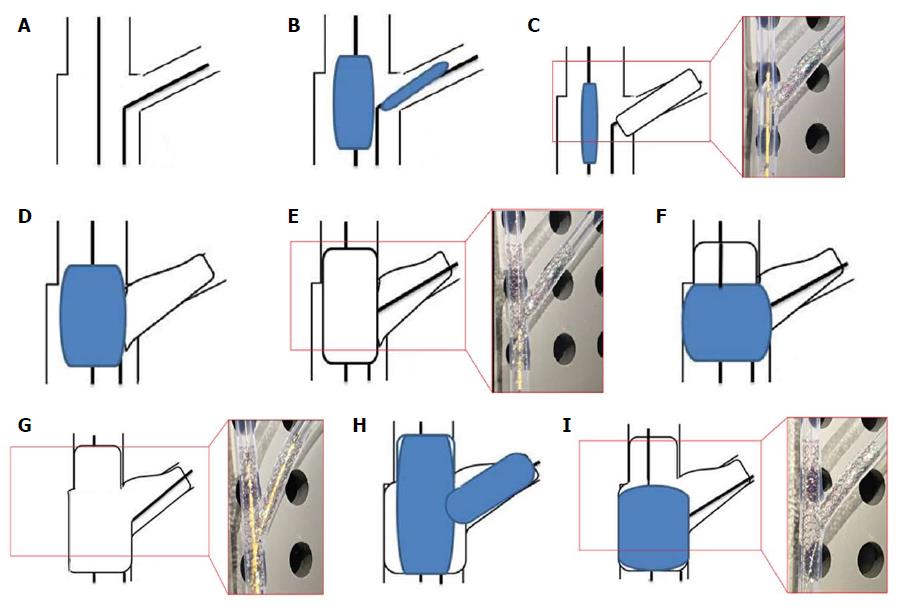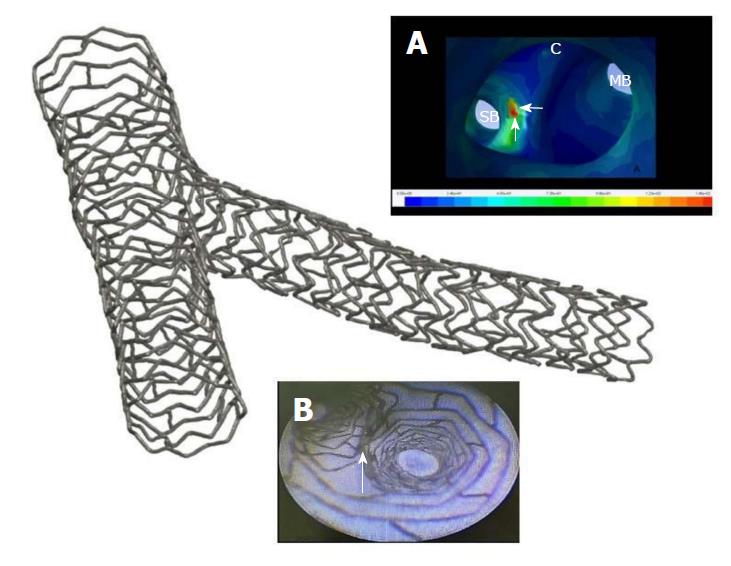Copyright
©The Author(s) 2018.
World J Cardiol. Nov 26, 2018; 10(11): 191-195
Published online Nov 26, 2018. doi: 10.4330/wjc.v10.i11.191
Published online Nov 26, 2018. doi: 10.4330/wjc.v10.i11.191
Figure 1 Key steps in the Nano-Crush stenting technique.
As both branches are wired (A), both branches are predicated with non-compliant balloons (B) and the stent is deployed at the side branch (C: bench test correlate image). The balloon of the deployed stent is withdrawn and the main branch balloon is inflated in the main branch (MB) at high atmosphere (D); The MB stent of the diameter of the distal reference diameter (3.0 mm) is placed in position and deployed (E: bench test correlate image); Proximal optimization technique (POT) with non-compliant balloon of the same diameter of the MB is performed at high atmosphere (F) and after rewiring of the side branch (G: bench test correlate image), a snuggle kiss is performed with non-compliant balloons (H); Finally, a re-POT is performed with a non-compliant balloon at high atmosphere atm (I: bench test correlate image).
Figure 2 Microcomputed tomography picture of a bifurcation treated by the Nano-Crush technique.
A: Region of the carina investigated by computed fluid dynamic showing from the inside of a vessel with high wall shear stress (red zone, white arrows) located at the side branch portion of the carina, which should potentially be in favor of less restenosis and thrombosis at that site; B: Angioscopic image of the same region showing a very smooth transition of the wall at the bifurcation with a very minimal (Nano) apposition of two stent layers. SB: Side branch; MB: Main branch.
- Citation: Rigatelli G, Zuin M, Dash D. Thin and crush: The new mantra in left main stenting? World J Cardiol 2018; 10(11): 191-195
- URL: https://www.wjgnet.com/1949-8462/full/v10/i11/191.htm
- DOI: https://dx.doi.org/10.4330/wjc.v10.i11.191










